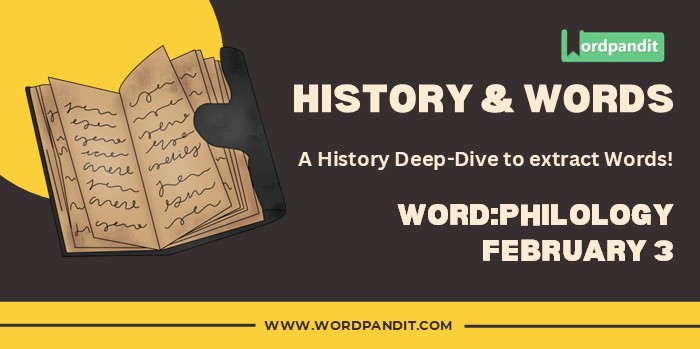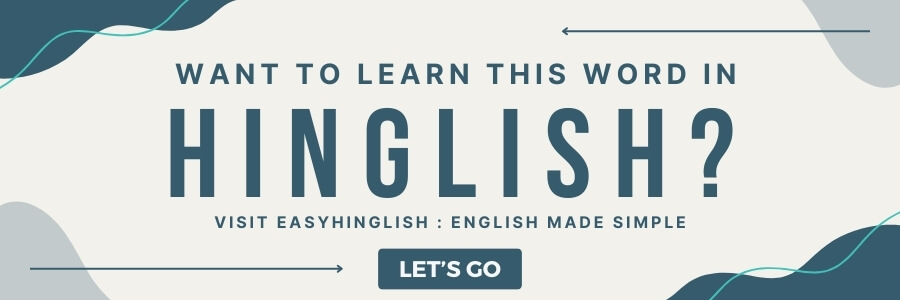History & Words: ‘Philology’ (February 3)
Welcome to ‘History & Words.’ 🌟 I’m Prashant, founder of Wordpandit and the Learning Inc. Network. This series combines my passion for language learning with historical context. Each entry explores a word’s significance on a specific date, enhancing vocabulary while deepening understanding of history. Join me in this journey of words through time.
📚 Table of Contents
🔍 Word of the Day: Philology
Pronunciation: /fɪˈlɒlədʒi/ (fi-LOL-uh-jee)
🌍 Introduction
On February 3, 1468, Johannes Gutenberg, the pioneer who revolutionized the study of language and literature through his innovative printing press, passed away. His invention would transform the field of philology, making texts widely available for scholarly analysis and comparison across different languages and cultures.
Philology, the study of language in written historical sources and the intersection of literary studies, history, and linguistics, represents one of humanity’s oldest intellectual pursuits. It encompasses not just the study of texts themselves, but the entire context of language development, cultural evolution, and historical documentation.
The significance of philology extends far beyond academic circles, as it has played a crucial role in preserving and understanding our cultural heritage, deciphering ancient languages, and tracking the evolution of human thought through written records.
🌱 Etymology
The word “philology” derives from the Greek words “philos” (loving) and “logos” (word, reason), literally meaning “love of words” or “love of learning.” This term emerged in the 16th century, though the practice it describes dates back to ancient civilizations who studied texts to understand their linguistic and cultural significance.
📖 Key Vocabulary
- 🔑 Textual Criticism: The technique of analyzing and comparing different versions of texts to establish their original form and meaning.
- 🔑 Comparative Linguistics: The study of relationships between languages and their historical development.
- 🔑 Paleography: The study of ancient writing systems and historical manuscripts.
- 🔑 Hermeneutics: The theory and methodology of text interpretation, particularly biblical and philosophical texts.
- 🔑 Lexicography: The practice of compiling dictionaries and studying word meanings across time.
🏛️ Historical Context
The practice of philology has ancient roots, with scholars in Alexandria, Rome, China, and India meticulously studying and preserving important texts as early as the 3rd century BCE. The Library of Alexandria became the first major center for philological study, where scholars compared different versions of texts and established authoritative editions.
During the Middle Ages, philological work was primarily carried out in monasteries, where monks painstakingly copied and preserved classical texts. Islamic scholars also made significant contributions, preserving and translating Greek philosophical works that might otherwise have been lost to Western civilization.
The Renaissance marked a turning point for philology with Gutenberg’s invention of movable-type printing. This innovation democratized access to texts and enabled scholars to compare different versions more easily, leading to the development of modern textual criticism.
⏳ Timeline
- 3rd century BCE: Establishment of the Library of Alexandria
- 8th-14th centuries: Medieval scriptoria preserve classical texts
- 1439: Gutenberg develops the printing press
- 1468: Death of Johannes Gutenberg
- 16th century: Term “philology” enters common usage
- 18th-19th centuries: Development of comparative philology
- 1786: Sir William Jones establishes Indo-European language family
- 1822: Champollion deciphers Egyptian hieroglyphs using philological methods
- 1920s-1930s: Rise of structural linguistics challenges traditional philology
🌟 The Day’s Significance
February 3, 1468, marks the death of Johannes Gutenberg, whose printing press would transform philological study. Before Gutenberg, texts were hand-copied, making them rare and prone to errors. The printing press allowed for the mass production of identical copies, enabling scholars to compare texts more accurately and distribute their findings widely.
The impact of Gutenberg’s innovation on philology cannot be overstated. It facilitated the Renaissance’s revival of classical learning and enabled the systematic study of textual variations. Scholars could now access multiple copies of the same text, leading to more accurate reconstructions of original works.
The standardization of texts through printing also contributed to the development of national languages and literary traditions. This standardization made it easier for philologists to track language changes over time and study dialectal variations.
💬 Quote
“The invention of printing, though ingenious, compared with the invention of letters is no great matter.” – Thomas Hobbes
🔮 Modern Usage and Reflection
Today, philology has evolved to embrace digital technologies, with computational methods enabling new forms of textual analysis. Digital humanities projects have made vast collections of texts searchable and comparable in ways Gutenberg could never have imagined.
While some consider traditional philology outdated, its core principles of careful textual analysis and historical context remain vital to understanding human culture and communication. Modern philologists combine traditional methods with new technologies to unlock insights about language and literature.
🏛️ Legacy
The legacy of philology extends beyond academia into fields like digital humanities, corpus linguistics, and cultural studies. Its methodologies have proven essential in preserving and understanding cultural heritage, from the Dead Sea Scrolls to medieval manuscripts.
Contemporary applications of philological principles continue to yield discoveries about ancient civilizations and the evolution of human language, demonstrating the enduring value of this disciplined approach to textual study.
🔍 Comparative Analysis
While early philology focused primarily on classical texts and biblical interpretation, modern philological approaches encompass a broader range of materials and methodologies. Digital tools have transformed the field, enabling large-scale analysis of texts while maintaining the traditional emphasis on careful reading and historical context.
💡 Did You Know?
🎓 Conclusion
Philology, from its ancient origins to its modern digital incarnations, represents humanity’s enduring quest to understand its past through the study of language and texts. As we mark Gutenberg’s passing, we recognize how technological innovations continue to transform this venerable field while maintaining its essential mission of preserving and interpreting our linguistic and cultural heritage.
📚 Further Reading
- 📘 “The History of the Book in 100 Books” by Roderick Cave and Sara Ayad
- 📗 “The Printing Revolution in Early Modern Europe” by Elizabeth L. Eisenstein
- 📙 “Introduction to Manuscript Studies” by Raymond Clemens and Timothy Graham












